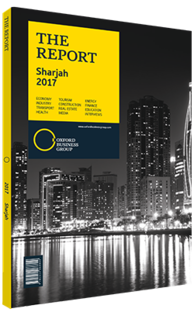Adel Ali, CEO, Air Arabia: Interview

Interview: Adel Ali
What are the prospects for regional expansion in the industry in the coming years?
ADEL ALI: We have consistently been achieving between 10% and 14% growth year-on-year (y-o-y), and I have no reason to believe that trend will not continue. Travel is part of people’s lives now and, despite what happens with regards to the geopolitics and the economy of the region, people will continue to travel.
In 2017 we are expecting to grow by around 12% in terms of both fleet and operations, and we hope that the number of passengers grows at a corresponding rate. This growth is going to come from a combination of new markets and existing ones. We now have our headquarters in Sharjah and hubs in Morocco, Egypt, Jordan and Ras Al Khaimah. In our business you always need a few more airports and a few more aeroplanes every year. In 2015 we opened 15 new airports and in 2016 we have opened five so far. We have also announced the opening of new routes, such as the one to Baku in Azerbaijan for 2017.
If we look at new possibilities for growth, North Africa has a sizeable population and only a few airlines, especially compared to a country such as the UAE with its four big players. So as soon as the political instability settles down in the region, that is where new opportunities should arise from, and we will be able to capitalise on the thirst that the Arabs have for travel.
How does Sharjah position itself relative to other airports in the region? What are its main competitive advantages?
ALI: First, Sharjah’s location is itself a main advantage. The citizens from the Northern Emirates have to pass through Sharjah if they want to go anywhere else.
Second, the airport is designed to be user-friendly. Today, in many airports, whether in the UAE or elsewhere, it takes travellers lots of time to go through the processes, meaning that more time is needed in the airport between check-in and take-off, or between touch-down and reaching your car. Sharjah’s size means this time is significantly cut down, making the whole journey more pleasant for the passenger.
What are your thoughts on the current business environment in Sharjah and the region?
ALI: I believe Sharjah has been successful in establishing itself as a cargo hub and has benefited from this. In terms of proportionality, it continues to be a good cargo hub. The business volume goes up and down according to global trends because cargo is a global business, but this is not the only time we have seen this. Business goes through cycles and these last for a year or so and then move forward. If the infrastructure is there, then when business comes back, Sharjah will be a good centre for operations.
As a result of its core industries, the Gulf region has traditionally been an import market. But what we have seen in terms of agriculture in the UAE is that y-o-y it continues to grow. You also find that between the Sharjah International Airport Free Zone and the industrial areas, new small and medium-sized enterprises are growing. So with the help of the ports and the airport, the relative size of exports is steadily growing.
How would you asses the state of regulations in Sharjah, and how have they benefitted the aviation sector at both the federal and local level?
ALI: From a regulation perspective, the aviation sector in the UAE is one of the best that I have seen in the MENA region. Since it established an open skies policy, companies have been welcome to enter the sector, thereby increasing competition. This is reflected in the country’s four major airlines and the competitive environment that pushes innovation forward. The UAE applies a business approach to the industry in terms of encouraging tourism. They have made it easy to enter from a visa point of view, and we have the facilities to accommodate these visitors.
You have reached the limit of premium articles you can view for free.
Choose from the options below to purchase print or digital editions of our Reports. You can also purchase a website subscription giving you unlimited access to all of our Reports online for 12 months.
If you have already purchased this Report or have a website subscription, please login to continue.

